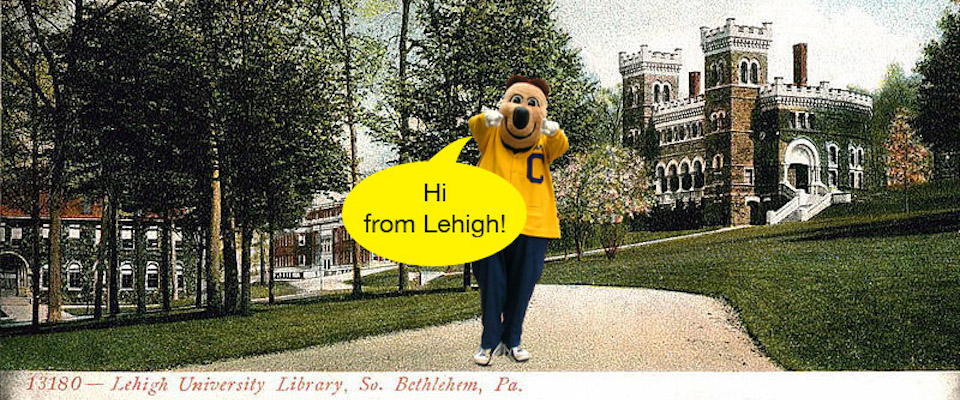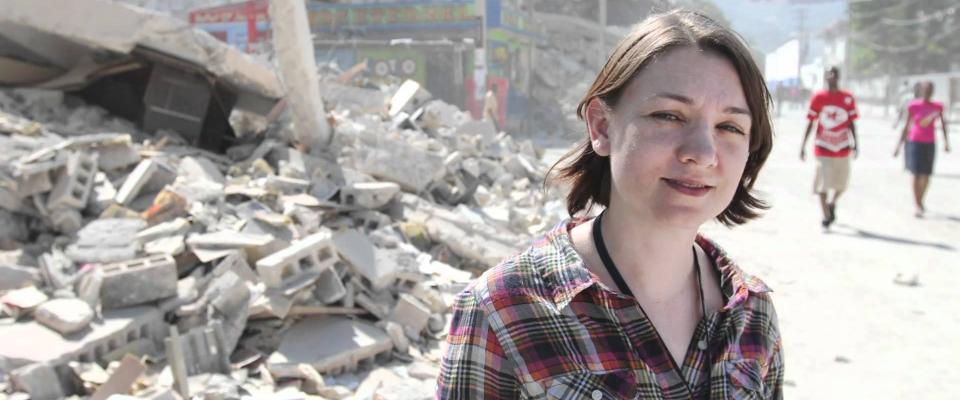UC Berkeley is consistently ranked one of the best research universities in the world, but what happens to researchers after they leave?
Earlier this month, four Cal grads—four! Can we get a Go Bears?!— were featured in the Lehigh Research Review for their remarkable work in sustainable infrastructure, college admission economics, and discourses on border identity.
Check out their research below to find out what these Berkeley grads-cum-Lehigh professors have been up to since they left the den.
Harder, Better, Faster, Stronger, Smarter
Trump’s promise to improve the nation’s infrastructure may have gotten lost in the whirlwind of news, but trains, bridges, and roads have hardly fallen by the wayside. Recently, researchers at Lehigh are turning their attention to “cyber-physical” systems, which use technology to live-monitor physical structures.
One such researcher, and a former Ph.D. student in Cal’s department of civil and environmental engineering, Shamim Pakzad used fixed sensor networks to track the Golden Gate Bridge’s minute structural vibrations. Now, as an associate professor at Lehigh, Pakzad is continuing to bridge the gap (pun intended) between digital communication technology and bridge health. Using an algorithm called STRIDEX, Pakzad digs through data collected by mobile sensors—like our smartphones—to diagnose and address problems as they arise.

At Lehigh, Pakzad is joined by Richard Sause, who completed both his master’s and Ph.D. in civil engineering at Berkeley. Sause is now looking at “how interdependent systems work together during and after a disaster,” according to the Lehigh Research Review. The two are working together as part of a group that was recently awarded a $2.5 million grant to improve the nation’s transportation systems under the Fixing America’s Surface Transportation Act.
According to Berkeley civil engineering professor Kenichi Soga, forward-thinking infrastructure plans like Pakzad and Sause’s are on the right track. “A lot of things can change in 20 or 30 years… so we should design our infrastructure with more resilience and less rigidity in mind.”
And a sensor-rich environment, Soga told CALIFORNIA contributor Glen Martin, “would let us develop better models, from the regional scale to street level.”
The Cost of Interest
College admissions is an increasingly sensitive subject, especially when it comes to race and socioeconomic status. To make matters even more complicated, new research suggests that applicants’ chances are also affected by the amount of interest they show.
At Lehigh, a team of researchers including Muzhe Yang, associate professor of economics and former Berkeley Ph.D., found that applicants who “demonstrated interest” in a “medium-sized highly selective university” by visiting the campus in person had a better chance of being admitted than applicants who only attended a local information session. Of course, visiting schools isn’t cheap, and not everyone can afford the luxury. Unsurprisingly, it’s often the applicants with high SAT scores and other advantages who reap the rewards of this system.
For their part, universities like those involved in the study feel the pressure to accept strong candidates who seem highly likely to attend. As explained in the Lehigh Research Review,
When a university must balance the goals of increasing selectivity and the quality of the targeted size, the university has an incentive to accept those students who are more likely to attend, the researchers say. This enables the university to make fewer offers of admission, which improves its selectivity ranking, and reduces the risk of a lower yield.
To combat what they described as the “inequity” of this system, the researchers also looked at new ways of subsidizing the costs of in-person visits for low-income students.
Bordering On a New Identity
The consequences of the current immigration crisis are only just beginning to unfold. Just last month, Cal alum and award-winning journalist Sonia Nazario wrote an op-ed in the New York Times responding to new border regulations that legal advocate Cory Smith says “are trading kids in cages for families in cages.” Nazario argues for more humane immigration laws, saying simply, “prisons are bad for kids, even if they have their parents with them.”
Meanwhile at Lehigh University, former Berkeley Ph.D. Miguel Pillado is turning his attention to the people of Tijuana. Using literature as his lens, he’s exploring life on the Mexican side of the U.S./Mexico border and what he refers to as inhabitants’ “self-perception of identity.”

For Pillado, a current professor of Spanish and Hispanic Studies at Lehigh, his studies hit close to home. At the age of 16, he left his home in Mexico and immigrated to the U.S. where he was forced to confront his new identity. “Even though, within the spectrum of the United States, Mexican Americans are a marginalized group of people,” Pillado told the Lehigh Research Review, “when I came here there was also a hierarchy within this same group.”
Currently, he is writing a book with the working title La Ciudad de Una y Mil Caras (The City of a Thousand and One Faces). In it, he casts off the two-faced mask long-forced upon Tijuana.
On the U.S. side of the border, Tijuana has been typecast as a seedy and wild city where anything goes. On the Mexican side, Tijuana becomes “a city through which American culture filters and contaminates and pollutes Mexican identity and Mexican culture,” Pillado explained. In his forthcoming book, Pillado brings together the writers of Tijuana who are working to dispel stereotypes about their city in favor of a new Tijuanese identity, on their own terms.
One of the writers Pillado studies is Heriberto Yépez, a current Ph.D. student in the department of Spanish and Portuguese at Berkeley and Pillado’s old classmate. Yépez himself is an accomplished writer who wrote an essay about metaphorical representations of the border that had a profound effect on Pillado.
In a recent counter-interview with Sergio Sarano, Yépez credits living in Tijuana with helping him understand his English-Spanish duality, particularly as a writer. “I feel border writing is critical today, even more than in the 90s,” Yépez explained. “‘Literature’ is still too nation-based.”




















